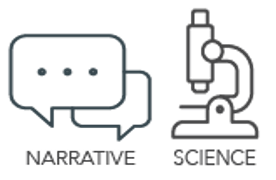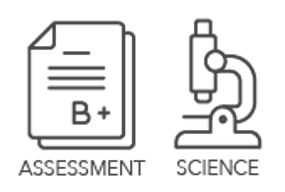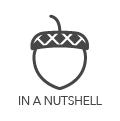Standards + Practices
DCI: LS2.A Interdependent relationships in ecosystems
SP4: Analyzing & Interpreting data
Students will analyze and interpret data from their School Grounds Map and Data Recording Sheets to discuss the types of microhabitats where ladybugs have or have not been found on school grounds to determine what features of these spaces aid in ladybug survival (See In a Nutshell).
SP2: Developing & Using Models
Students will determine a ladybug’s role in an ecosystem by creating a model food web (See In a Nutshell & Narrative).
SP8: Obtaining, Communicating, & Evaluating Information
Students will evaluate information regarding a ladybug’s role in an ecosystem to communicate where they may or may not find ladybugs on school grounds (See In a Nutshell, Narrative, & Assessment).
Resources + Supports

Reviewing Data
How does the presence of ladybugs change across the school year? What might explain those changes?
- Which species of ladybugs do we find at our school? Are they native, non-native, or both?
- What features of our school grounds make the space habitable/uninhabitable for native ladybugs?
How can we improve habitat for ladybugs in our schoolyard?
Participatory science relies on the data collected by everyday people, and your participation is key! Remember to collect, photograph, and upload ladybug data as often as possible with your class. Refer to the supports provided in previous months for tips on photographing and recording your data.
Students can use the data gathered from the School Grounds Map and Data Recording Sheets to help them consider the first two bulleted questions above. As students review the data collected, they can begin to discern which species of ladybugs is most prevalent on your school grounds and in which locations those species can be found. Reviewing the data in this way will help students focus on the features of the school grounds that make the space habitable/uninhabitable for native ladybugs.

Ms. Jones’ Class Considers the Ladybug’s Food Chain
Ms. Jones is getting ready to introduce the concept of a food web to her class and wants to incorporate what students have been learning about ladybugs. Typically, she uses an activity that focuses on feeding relationships and the roles of plants, grasshoppers, mice, and owls in an ecosystem. However, knowing that students are working with the Ladybugs at School Project throughout the year, she decides to adjust the activity to focus on ladybugs as consumers, with aphids as their prey and birds as their predators. The Ladybugs at School project provides a context for all students in her class to make meaning of interdependence concepts. Ms. Jones directs students to consider the School Grounds Map they have posted in the classroom and specifically shares that the areas they have been exploring as a class to look for ladybugs are also microhabitats. She asks students to consider what microhabitats they have present on their school grounds, as well as what organisms live in or near these school grounds microhabitats. Ms. Jones also shares photographs that the class has taken to help students remember what they have observed over the past few months. Shifting the discussion to more directly relate to the concepts of food webs, Ms. Jones displays pictures of plants that they have found, and asks how the plants get their food. Building on an earlier conversation about plants’ needs, the class understands that plants produce their own food. Ms. Jones labels these organisms “producers.”
Ms. Jones knows that ladybugs mainly eat aphids and other soft-bodied insects, but she realizes that many students think plants are ladybugs’ primary food source because that is where they are found. (The squash ladybug does eat plants; Ms. Jones will later clarify this point with students, but for now she plans to focus on the food sources of the species the class has found most frequently: Asian multicolored and 7-spotted ladybugs). She starts by showing photos that the class has taken of other insects, like aphids and other insect larvae, that mainly eat plants. She has not been able to capture a photo of a ladybug eating an aphid but uses photos sourced online to show students how both larvae and adult ladybugs prey on aphids. Similarly, students have not seen a bird preying on a ladybug, but Ms. Jones makes students aware of that relationship. The class uses these photographs to construct a food chain, and she labels the ladybugs “consumers.” In later lessons, Ms. Jones plans to continue to build out this food chain as a food web, incorporating decomposers. The next time students go outdoors, they will look for evidence of feeding relationships (e.g., bite marks in leaves, aphid presence in plants) in their schoolyard ecosystem and consider adding labels to their School Grounds Map.

Outdoor Search Tips
Prior to taking students outside to search for evidence of ladybugs as consumers and of their survival in an ecosystem, the following guidance might be helpful to consider:
- Identify a spot on your School Grounds Map where ladybugs have been found. Return to that spot to continue searching for ladybugs.
- Students will be observing to find evidence of ladybugs as consumers. Once ladybugs have been found, remind students to move slowly, trying not to disturb the ladybugs, so that they won’t fly away.
- Guide students to track the ladybugs with their eyes first, and then move with their bodies second. Students should attempt to “follow” the ladybug to search for more evidence of the ladybugs seeking food, water (in the form of condensation, dew, or from their food), or shelter. However, specific guidelines should be established about how far a student can “follow” a ladybug. If they fly away, the ladybugs will move faster and farther than expected. Be sure to reassure students that it will be okay if they miss it or are unable to “follow” it.
- Don’t forget to record any ladybugs you find on your Ladybug Data Recording sheets and your School Grounds Map.

Ecosystem Resources
The Media Guide includes books and video resources that help students understand the various roles organisms have in an ecosystem. Help students build their knowledge of food web related vocabulary words by referring to the “Organism Roles” section.
The Media Guide also contains resources for deepening student understanding of various ecosystems. As students begin to consider habitats where ladybugs are most likely to be found compared to the data they have collected thus far, knowing more about the various ecosystems can support student sense-making.

Exit Ticket Prompts
The following prompts offer ideas for assessing students’ understanding, including key vocabulary. Use one or both prompts that will best assess the focus of your work with students.
Prompt 1:
Based on what you know about ladybugs, where in your schoolyard or in which microhabitat do you predict you are most likely to find them? Use words, drawings, and/or diagrams to explain your thinking.
Teacher note: Potential ideas to look for in student responses:
- Because ladybugs are consumers, they tend to be located near their food sources (in areas of significant plant growth with aphids and pollen or higher up in trees near mites).
Prompt 2:
Based on what you’ve learned about food webs, how would you describe the ladybug’s role in one? Use one or more of the following in your response: consumer, producer, predator, prey.
Teacher note: Potential ideas to look for in Student responses:
- I know that ladybugs are predators because they eat aphids that they find on plants. They could also be considered a consumer because they do not produce their own food, but rather eat plants and animals to obtain energy.

Conservation Efforts
Reductions in insect populations can drastically affect the food chain, and conservation efforts are necessary to restore the balance.
- Refer to the following article for more information on declining insect populations, reasons for the decline, and the importance of conservation: Where Have All the Insects Gone?
- Another project focused on ladybugs, The Lost Ladybug project, grew out of the desire to restore the nine-spotted ladybug population. The Lost Ladybug Rescue emerged as a result of the data collected on the project’s website.
Some states have local efforts in restoring insect populations. For example, in North Carolina, the Growing Small Farms NC State Extension is a great resource to search for more information regarding the conservation of beneficial insects.

In next month’s activities, students will focus on ladybugs’ survival practice of overwintering. In addition, students will review various media (articles, blogs, advertisements) to discern a positive or negative viewpoint on ladybugs. Supports are provided with more information regarding overwintering, persuasive articles, and outdoor search tips for colder temperatures.


